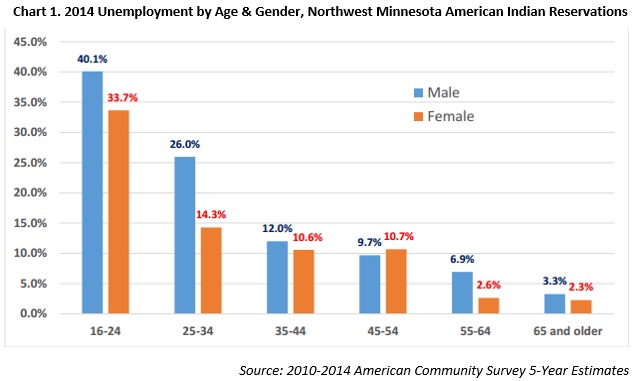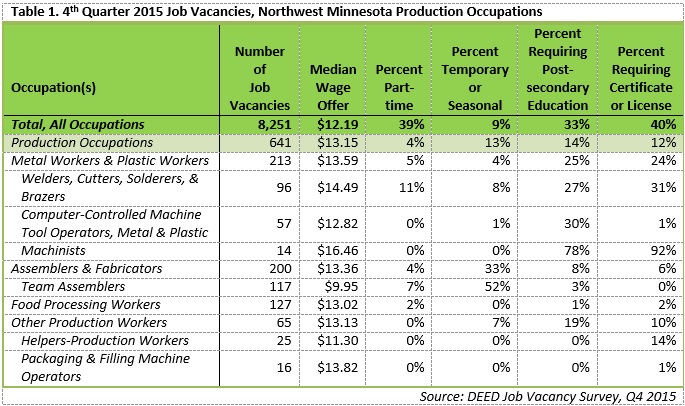 The presence of such industry powerhouses as Polaris, Arctic Cat and New Flyer make Northwest Minnesota a hub of transportation equipment manufacturing.
The presence of such industry powerhouses as Polaris, Arctic Cat and New Flyer make Northwest Minnesota a hub of transportation equipment manufacturing.
From wheat and potatoes to soybeans and sugar beets, the region is a major producer and processor of food staples and specialty agricultural products.
Want the freshest data delivered by email? Subscribe to our regional newsletters.
3/18/2016 12:13:02 PM
Chet Bodin
Consistently high unemployment, relatively low labor force participation, low educational attainment and poverty are long-standing challenges that Minnesota’s American Indian population face.
This is especially important in the 26-county Northwest Minnesota region, where over one-third (37.6 percent) of Minnesota’s American Indian population lives. This includes about 15,000 people on the Red Lake Nation, Leech Lake and White Earth Reservations alone. In comparison, only 10.3 percent of the state’s total population lives in Northwest Minnesota.
As reported in December’s NW Local Look blog, DEED awarded the Northwest Indian OIC a grant through the Minnesota Job Skills Partnership’s Low Income Worker Training Program to help alleviate poverty and address other social challenges. The grant will fund health care occupational training on the Leech Lake and Red Lake Nation reservations, and is an excellent example of how targeted job training can simultaneously address industry needs and the persistent unemployment that drags on the region’s American Indian population.
Unemployment is a problem in regional American Indian communities, but not equally so for all segments of the population. At nearly every age, men suffer higher unemployment rates than women on American Indian reservations located in Northwest Minnesota (Chart 1). The largest unemployment disparity between genders is found in the 25- to 34-year-old age group, where men are unemployed almost 12 percent more of the time (26.0 percent) than women (14.3 percent).

However, this age group does not have the highest unemployment rates. Males from 16 to 24 years of age living on the reservations registered over 40 percent unemployment, and females in the same age group did not fare much better, registering a 33.7 percent unemployment rate. Conversely, both genders see unemployment rates fall rapidly after age 35, even dropping to the single digits above 55 years of age.
Although the NWIOIC health care grant offers opportunities for men to train in non-traditional occupations such as Certified Nursing Assistants and Community Health Workers, females still greatly outnumber males in these occupations. Instead, other occupational training may be more suited to the young male demographic that registers the highest levels of unemployment on the reservations. For example, men outnumber women by more than 3-to-1 in production occupations among Native Americans in Minnesota.
Employers in Northwest Minnesota reported nearly 650 production occupations in the fourth quarter of 2015, according to DEED’s Job Vacancy Survey. Overall, just 14 percent of those openings required post-secondary education, though that varied greatly by occupation. For example, 78 percent of the machinist vacancies and about 30 percent of the openings for both welders and computer-controlled machine tool operators require post-secondary education. Those occupations also tended to offer higher wages (Table 1).

In light of this, MJSP board also funded two training programs in Northwest Minnesota last September that target American Indians in production occupations – one on a reservation and one off:
In total, the two programs will train 78 workers from low-income backgrounds, with a priority given to Native American and other minority groups, and connect the training to both the regional manufacturing and construction industries. You can find more information on both programs on the MJSP Funded Projects and Grant Management webpage.
Contact Chet Bodin.